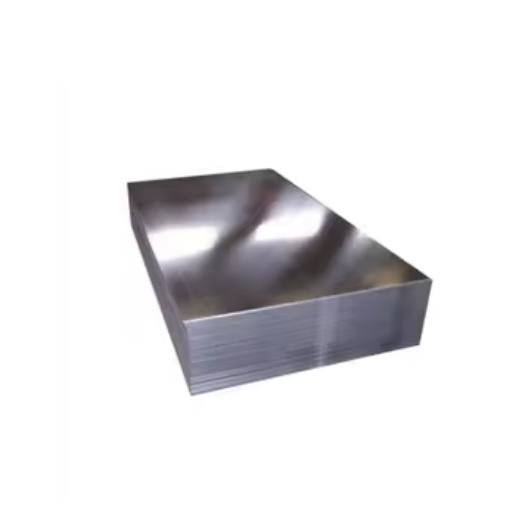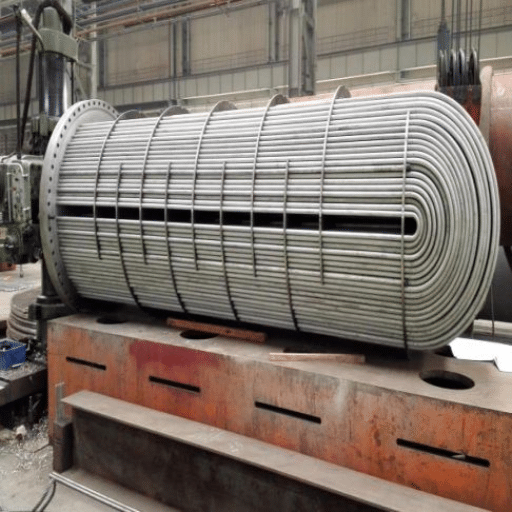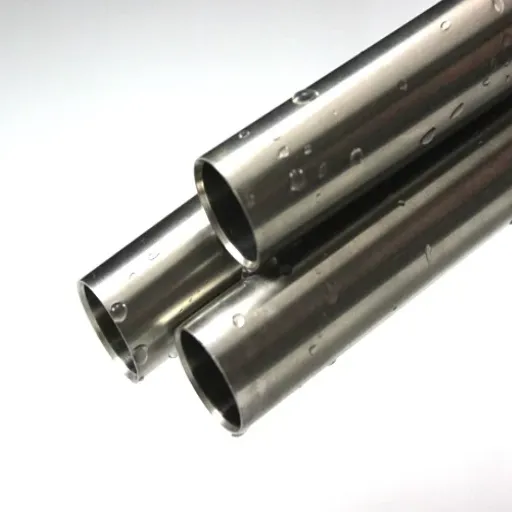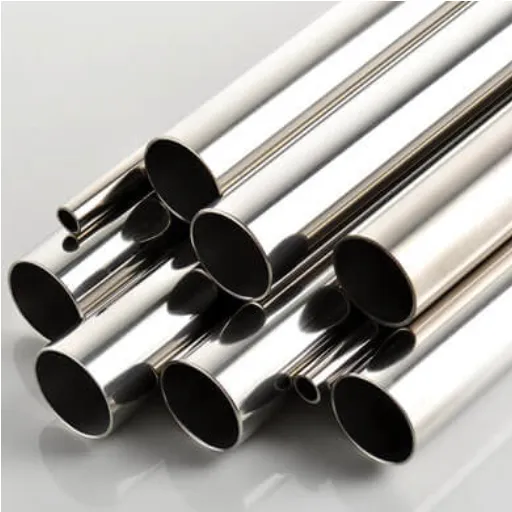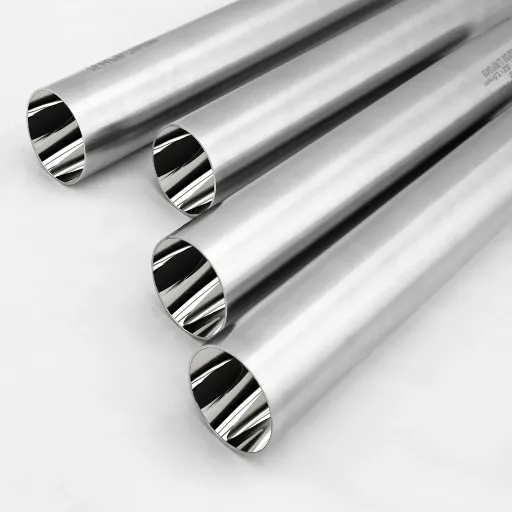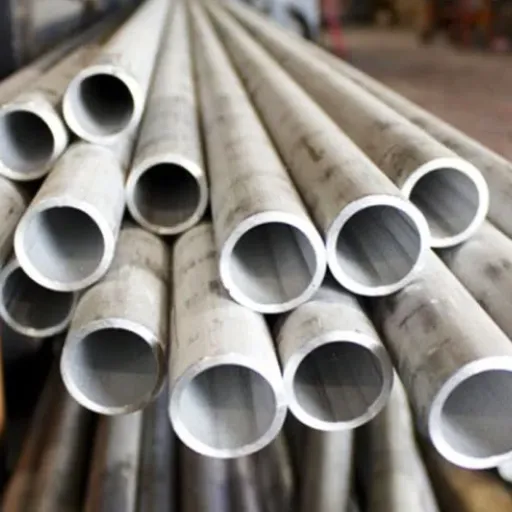HY-80 steel plate is widely recognized as a high-performance material designed to meet the demanding requirements of industries requiring extreme strength and durability. Known for its superior toughness, weldability, and resistance to stress, HY-80 has been a critical component in various applications, from military-grade equipment to offshore platforms. This guide will provide an in-depth exploration of HY-80 steel plate, examining its unique properties, the science behind its exceptional performance, and the industries that rely on it. Whether you’re an engineer, manufacturer, or industry professional, this article will give you the insights you need to understand why HY-80 is the material of choice for high-stakes projects. Read on to discover how HY-80 continues to push the boundaries of what steel can achieve.
What Makes HY-80 Steel Plate Ideal for Submarine Construction?
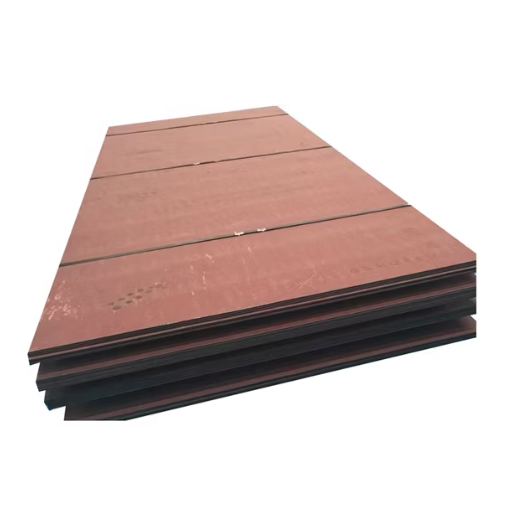
Understanding the Mechanical Properties of HY-80 Steel
HY-80 steel, with its very high strength, tough nature, and eminent resistance to brittle fracture, is therefore ideally suited for making submarines. Being a low-alloy high-yield steel, the nomenclature is derived from its minimum yield strength of 80,000 psi, which qualifies this steel as one that can stand much stress without permanent deformation. The specific chemical composition enhances the mechanical properties of HY-80, with nickel, chromium, and molybdenum among others, imparting it with strength and resistance to corrosion.
One of the most important benefits of HY-80 is its ability to provide a high degree of fracture toughness, giving the material the ability to withstand extremely high loads and harsh environments, and perform reliably thereunder. Fracture toughness is a very important property of submarines, as these vessels operate at huge pressures at great depths. HY-80 tries to resist the propagation of cracks under stress, and this property greatly reduces the chance of sudden failure and hence increases the operational safety and reliability.
Furthermore, the weldability of the steel is critical in its application to submarine construction. HY-80 can be welded without detrimentally affecting its mechanical properties, which is of paramount importance in assembling complicated structures such as pressure hulls and frames. This property diminishes the creation of any structural weakness and maintains uniformity of the physical properties of the steel in welded sections. These mechanical properties make HY-80 steel irreplaceable for works demanding durability, precision, and resilience in harsh marine environments.
How Does HY-80 Compare to Other High-Strength Steels?
HY-80 steel differentiates itself from other high-strength steels mainly due to its combination of toughness, strength, and weldability. While other similar high-strength steels lose strength at sub-zero temperatures, HY-80 retains this characteristic; this makes it apt for very critical applications in submarine hulls and other marine environments. Being of low carbon steel, it welds easily without cracking, a big problem associated with high-strength alloys during and after welding.
Unlike steels with comparable tensile strengths, such as A514 or AR400, HY-80 steels have superior impact resistance and ductility. This, therefore, means that structures in HY-80 steel can resist the effects of high-stress levels and sudden impacts without experiencing catastrophic failure. Some high-strength steels tend to lose their resilience under dynamic loading; however, HY-80 remains mechanically strong and thus performs better in static and dynamic loadings.
Conversely, HY-80 steels are also distinguished by specification standards and certifications that are tightly controlled to meet exacting criteria for military and marine-grade applications. Reliability is thus guaranteed as these steels go into critical-use applications where safety must not be compromised. While other high-strength steels may perform better in particular areas, HY-80 provides a balanced range of capabilities across several areas deemed critical, assuring industries that demand exactness and toughness of its versatility.
The Role of HY-80 in Submarine Hulls
Essentially, HY-80 steel is used in submarine hull construction because of its extraordinary strength, toughness, and resistance to fracturing under immense pressure. At great depths, when water pressure reaches its peak, submarine hulls are subjected to extraordinary stresses. High yield strength of HY-80, which, for instance, corresponds to values denoted by eighty thousand pounds per square inch, allows it to perform and uphold all subjections related to deformation or loss of structural integrity.
In submarine construction, the front-line unique features of HY-80 are its better weldability compared to any other high-strength steel with approximately the same set of properties. This allows complex hull designs to be welded and fabricated more safely and efficiently without any impact on the overall performance of the material. The material is further subjected to rigorous quality controls and treatment to ensure homogenous properties through the steel plates, thus eliminating weak spots, which might pose dangers during operation.
Subsequently, HY80’s ability to resist brittle fracture at low temperatures is one of the most important traits, especially where submarines operate in polar or deep-sea waters. This amalgamation of satisfaction with durability and reliability makes HY80 the material of choice for naval engineering. HY-80 ensures that submarines gain better safety and operational efficiency, together with an extended lifespan, which in turn reduces long-term maintenance costs and increases mission reliability.
Exploring the Fracture Resistance of HY-80 Steel
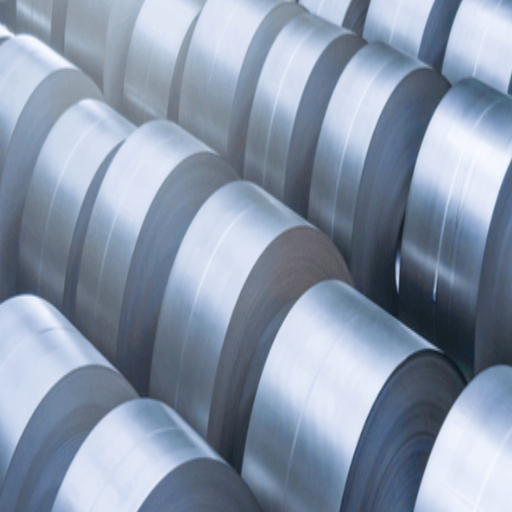
The Fracture Mechanics Behind HY-80 Steel
HY-80 steel represents one of those materials whose fracture toughness is so exceptional that it was considered to be built upon its reliability for use under extreme stress and fluctuating load conditions. The fracture resistance of HY-80 stems mainly from its microstructure, which in turn arises from a carefully controlled mixture of nickel, chromium, and molybdenum. These alloying elements form a fine-grained martensitic structure to gain the maximum strength while still remaining tough.
Resistance to the initiation and propagation of a crack is crucial when found in high-pressure domains such as deep-sea operations. HY-80 steel’s low ductile-to-brittle transition temperature (DBTT) provides invaluable advantages by retaining ductility even in cryogenic environments. This, in turn, makes it extremely fit for submerged applications in polar regions, where fracture due to thermal stresses would certainly be high.
The production of HY-80 also includes advanced metallurgical processes like heat treatment and quenching to impart extra toughness and relieve residual stresses. Its critical stress intensity factor (K_IC), indicating the ability of a material to resist fracture under tensile stress, is well above that of regular engineering requirements and hence further consolidates its supremacy in naval and industrial sectors. HY-80 steels continue to set the standards of steel performance in extreme environments by undergoing rigorous testing in qualification to ASTM standards.
How Nickel and Other Alloying Elements Enhance Toughness
Nickel boosts the steel’s toughness by fostering a fine-grained microstructure and resisting brittle failure at low temperatures. It does this by stabilizing the austenitic phase of steel, even in detrimental environments, thus ensuring uniformity and ductility. Besides, nickel imparts impact energy to the steel and provides some added importance in applications that require high-performance materials under dynamic or shock-loading conditions.
Added alloying elements further optimize toughness with molybdenum and chromium. Molybdenum acts on grain boundaries to strengthen them and deter micro-cracks when applied stress or thermal cycling takes place at high levels. Chromium brings corrosion resistance and, in synergy with nickel, increases wear resistance and hardness of the material. Together, these elements enable steels like HY-80 to perform reliably in extreme environments, deep-sea submersibles, or offshore platform applications.
Within the laboratory analyses, it has been observed that controlled additions of nickel and molybdenum can boost Charpy V-notch impact energy properties by as much as 50% when compared to carbon steels that have no such alloying elements present. This enhancement otherwise points toward the importance of alloy composition in engineering materials for harsh applications.
Understanding Crack Growth in HY-80
Crack propagation behavior in HY-80 steel is influenced by interactions between material properties, microstructural features, and environmental phenomena. This low-carbon, high-strength alloy is susceptible, especially to fatigue and stress-corrosion cracking, while being used in a highly demanding set of environmental conditions such as those prevailing in marine or subsea environments. The microstructure in HY-80 steel, most often tempered martensitic, also defines the material’s resistance against crack propagation. Aspects such as grain boundary cohesion, residual stresses in the component, and precipitate morphology affect the rate of initiation and growth of cracks.
Recent advances have shown that good heat treatment has the ability to enhance the resistance against crack propagation by lowering grain sizes and providing a more uniform distribution of carbides. Moreover, the stress intensity factors (K) that are obtained during fatigue testing of HY-80 steel bring attention to the fact that cyclic frequency and amplitude of the applied loading herein increase the growth rate of cracks. Reducing stress concentrations at design-critical points has been experimentally shown to reduce the risk; finite element analysis methods are thus used for geometrical optimization.
Along with environmental factors, the presence of chlorides in seawater promotes cracking mechanisms through hydrogen-assisted cracking (HAC) and/or localized corrosion pits serving as stress concentrators. Thereby, cathodic protection, improved alloy design with the help of enhanced nickel-chromium content, and surface coatings are usually used to negate these effects. Quantitative models that integrate Paris’ law for fatigue and environmental modifiers become necessary for engineers to ensure lifecycle safety versus performance predictions of HY-80 components in service.
Assessing the Weldability of HY-80 Steel
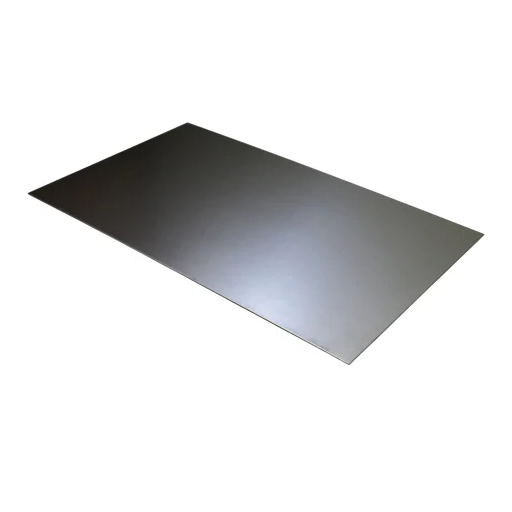
Key Weldability Challenges with HY-80 Steel
Weldability is an important factor when dealing with HY-80 steel owing to its high strength and low alloy composition. These properties make it highly prone to HAZ imperfections. One of the big problems is hydrogen-induced cracking, which is usually caused due to the diffusion of hydrogen inside the metal during welding, especially in high-strength steels. To avoid this, strict control is maintained on pre-weld cleanliness, moisture content in consumables, and post-welding heat treatments.
The other issue arises due to thermal stresses generated by the input of higher heat during the welding process. The uneven heating and cooling of various portions of the welding zone are also responsible for residual stresses, distortion, and also an element of thermal fatigue during service. Advanced welding methods like narrow gap welding and multipass welding with controlled interpass temperatures have been adopted to mitigate these effects.
And then, microstructure transformation in the HAZ may pose major problems. Rapid cooling may give rise to brittle martensite and, hence, weld toughness. Controlling the cooling rate and using filler metals whose strength and toughness properties match those of the base material can improve weld quality.
In addition, electrode and filler material selection are critical as HY-80 is prone to mismatch sensitivity. Low hydrogen flux or electrodes having specified compositions that are compatible with Navy specifications are used for best results.
Overcoming these challenges requires controlled planning, application of state-of-the-art welding technology, and conformance to established standards, such as MIL-STD-248 and AWS D1.1, which contain propagate rules for quality and inspection.
Optimizing Heat Input and Preheat for Weldments
Heat input and preheat optimization for weldments play an essential role in securing the structure and mechanical properties, especially when the joint is intended for high stress or special materials such as HY-80 steel. The heat input has to be controlled so as to allow penetration and fusion but never to the point of distortion, grain growth, or other detrimental transformations to the microstructure. Preheat stands in to decrease the chance of thermal shock while slowing down the cooling rate to reduce residual stresses and the possible development of brittle microstructure types such as martensite.
The recommended heat input values differ according to material categories and thickness, and also according to applicable standards using the industry. For example, welding parameters such as voltage, amperage, and travel speed should be calculated and used in such a manner as to remain within limits of acceptability as defined in technical standards like MIL-STD-219 and AWS D1.1. Preheat temperature, in contrast, is determined according to carbon equivalency formulae and chemical composition of the material. For HY-80, preheating is typically accomplished in the range of 150°F-250°F, depending on thickness; this will facilitate even thermal distribution at the welding site.
The application of newer technologies and methods, such as thermal imaging for preheat monitoring and real-time heat input control systems within automated welding setups, enables fabricators to precisely control these crucial variables. On the other hand, modern welding software for process simulation allows prediction and optimization of heat-affected zones and reduction of welding defects, thus contributing to better weld quality and compliance with operational standards.
The Impact of Weld Techniques on HY-80 Weldments
The kind of weld technique impacts the strength, quality, and final functioning of the HY-80 steel, which is a distinguished high-performance, low-alloy steel intended for applications involving high strength and resistance to brittle fracture. The following are five factors and techniques that influence the quality of weldments in HY-80 steel:
- Preheat and Interpass Temperature Control: Controlling preheat and interpass temperature can minimize hydrogen cracking susceptibility. However, in the case of HY-80, preheat temperature management must be kept within 250°F to 400°F, according to material thickness and welding process. This temperature management helps metallurgical transformations in the heat-affected zone (HAZ) and relieves the inner stresses.
- Weld Consumable Selection: Use consumables such as low-hydrogen electrodes or filler wire designed for high-strength steel compatible with HY-80 mechanical properties. E10018-M or other similar grade electrodes are commonly used to match tensile strength and reduce defects that may be included.
- Heat Input Control: Excessive heat input may coarse the HAZ microstructure further and reduce its impact toughness during welding. Welding- voltage, current, and travel speed- should be adjusted with an intent to maintain heat input in the range of 20 to 50 kJ/in to have a balanced result for both toughness and strength of weld.
- Post-Weld Heat Treatment (PWHT): Post-weld heat treatment is required to relieve residual stress and increase weldment toughness. For HY-80 steel, stress-relieving is usually done at about 1150°F for varied times depending on the size and complexity of the welds. This treatment helps to unite the microstructure of the weld and base material.
- Non-Destructive Testing (NDT) Methods: Phase transformation testing, such as ultrasonic testing (UT) and radiographic testing (RT), also aids weld integrity control. These methods help detect common defects such as porosity, lack of fusion, and hydrogen cracks to ensure weld quality that meets stringent military or industrial standards.
In the realization and assurance of these aspects, fabricators attend to improving the performance characteristics of the HY-80 weldment for safe use in submarines, pressure vessels, and military-grade structures of military grade. Without an accurate control of these, great integrity and longevity would not be consistent with this material.
Understanding Fracture Mechanics in HY-80 Steel Applications
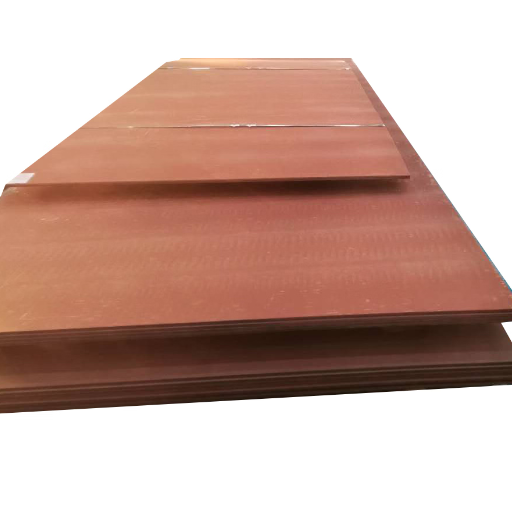
Evaluating Fracture Toughness in HY-80 Applications
Fracture toughness is a vital parameter in defining the behavior of HY-80 steel in demanding situations. This property measures a material’s ability to resist crack growth when a load is applied; hence, it matters deeply for such applications where structural reliability and safety are imperative, like submarines and pressure vessels. The fracture toughness of HY-80 steel is mainly influenced by its microstructure, chemical composition, and welding processes.
Experimental studies indicate that HY-80 possesses satisfactory toughness properties owing to the tempered martensitic microstructure resulting from controlled heat treatment. Heat treatment is mainly by quenching and tempering for balancing strength and toughness. Advanced testing of fracture toughness uses, for example, compact tension specimens tested under the ASTM E1820 standard to measure critical stress intensity factor (K_IC) values.
The fracture toughness depends to a great extent on temperature and loading conditions. The study acknowledges that HY-80 retains fairly good toughness properties even at sub-zero temperatures, the toughening being crucial for deep-sea applications. Poor welding may create HAZ with inferior mechanical properties, which may prove detrimental to fracture resistance. Consequently, strict welding procedures, including pre- and post-weld heat treatment, are laid down to ensure against such risks and preserve material performance.
In general, for safe and reliable use in critical infrastructure, assessing and enhancing fracture toughness in HY-80 steel requires carefully controlled material processing, thorough testing, and conformity to the highest engineering standards.
The Importance of Impact Strength and Charpy Testing
If we look at the impact strength, it is an interesting material property denoting the ability of a material to absorb energy when fractured or deformed suddenly. It is especially significant when the materials in question are subjected to high strain rates, low temperatures, or extremes of dynamic loading. In terms of the impact strength test, it is useful in evaluating the toughness of a material and its suitability for various demanding engineering applications, such as shipbuilding or pressure vessels, or those requiring structural components where specifically high stresses are encountered.
The Charpy impact test is arguably the most common means of determining impact strength, especially in metals. This means that a notched specimen is struck by the hammer of a pendulum, and the energy absorbed by the specimen during fracture is measured. An engineer considers the obtained values, usually simply in joules, with respect to the ability of the material to resist brittle failure under explicitly defined conditions. Data obtained through the use of the Charpy test can also be effectively used to determine the ductile-to-brittle transition temperature (DBTT) of materials, which is a critical consideration for safety-sensitive applications in freezing or variable-stress environments.
Once monitored using periodic Charpy test data analyzed through advanced data analytics, impact strength thus provides manufacturers and engineers with assurance that materials meet stringent performance requirements. Subsequently, advanced data analytics provide a basis for predictive maintenance, life-cycle analysis, and compliance processes by ASTM E23 or ISO 148.
Addressing Embrittlement Concerns in HY-80 Steel
HY-80 steel is a high-yield, low-alloy steel offering exceptional tensile properties and toughness in marine and military applications. The thrust of a major challenge lies in the graver low-temperature embrittlement that usually compromises its performance in subzero or sufficient dynamic stresses. The phenomenon is largely influenced or controlled by microstructural irregularities, residual stresses, and the sensitivity of the steel to notch effects.
A clearer insight into the mitigation of this problem comes from considering all aspects, including a heat treatment process and strict alloy composition control; thus, tempering at certain temperatures is necessary to develop the grain structure while reducing brittleness yet retaining the essential mechanical behavior. Complementarily, new cryogenic treatments increasingly seem to improve fracture toughness by promoting uniform precipitation of carbides, thus reducing stress concentrations.
Current research works further assess the need to introduce advanced fracture mechanical testing techniques of micro-indentation and Digital Image Correlation (DIC) analyses, allowing engineers to track the crack propagation behavior and detect thin zones of brittle materials before they go into full-scale failures. Analysis combined with computer simulation models enables materials engineers to set up a predictive framework for evaluating HY-80 under extreme service conditions.
Ensuring that one engages in relevant welding, testing, or treatment processes based on accepted international practice, such as MIL-S-16216 or NAVSEA technical publications, ensures that HY-80 conversion on thermal-induced deterioration is mitigated and guarantees long-term degradation of thermal-induced reduction in stresses. This ensures the very long life of any endeavor requiring utmost reliability, even under adverse environmental conditions.
The Role of HY-80 Steel in Naval Applications
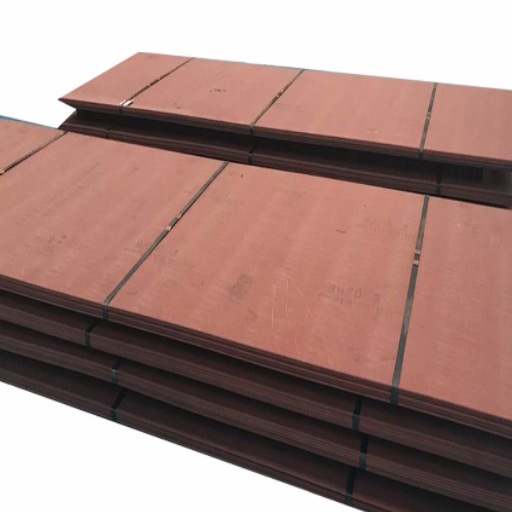
Why HY-80 is Essential for Naval Constructions
HY-80 has been regarded over time as a steel family with mixtures of properties essential for naval constructions: strength, toughness, and corrosion resistance. The HY-80 differs from the HY-series steels by virtue of advanced metallurgical processing, increasing tensile strength without compromising ductility. Having a minimum yield strength of 80,000 psi, it implies that it can resist being put under heavy pressure. Hence, steel is chosen for heavy-duty structural applications in submarines, aircraft carriers, and other naval vessels. Also, with great weldability, it allows for fabrication, repair, and maintenance work to be done seamlessly, a fact that must adhere to rigid requirements promulgated by bodies such as NAVSEA.
The other reason for the HY-80 reinforcing naval architectures lies within its assurance to function optimally under extreme environmental conditions. Naval vessels operate for a considerable amount of time at depths because of the presence of vast hydrostatic pressure and corrosive effects of saltwater. HY-80 low carbon content prevents hydrogen-induced cracking, which is a mechanism of failure for submerged structures. On the other hand, it is subjected to strict quality control measures, including heat treatment, to develop mechanical properties, microstructural uniformity, as well as consistency. These measures collectively contribute to ameliorating resistance against stress corrosion cracking, a factor that may seriously undermine the life and safety aspects of naval installations.
Furthermore, the steel’s use in the HY-80 provides the safety and efficiency necessary for mission accomplishment. Due to high-speed maneuvers, thermal variations, and vibrational stresses, modern warships and submarines are subjected to dynamic loading conditions. The steel maintains mechanical integrity against fluctuating stresses, thereby minimizing fatigue failure. This ability, combined with impressive machinability, enables naval architects to model highly intricate geometries without compromising on material performance. Hence, the HY-80 acts as the primary reliable backbone of naval fleets around the world, enabling their operational superiority and safeguarding national interests on maritime fronts.
The Use of HY-80 in Submarine Hulls and Other Naval Structures
HY-80 steel is a higher-strength low-alloy steel made to be used in naval ships. It has tensile strengths of about 80,000 pounds per square inch, which makes it one of the best choices for building submarine hulls subjected to static and dynamic pressures way high above those exerted on surface vessels. Their highly weldable nature, coupled with high fracture toughness, allows the fabrication of complex clamping watertight structures to withstand underwater conditions where such clamping watertight structures are operated. Such welding properties have utmost significance for submarines, especially those operating at great depths, where constant hydrostatic pressure tests the excellence of a material.
A major benefit of HY-80 is that it remains impervious against brittle fracture occurring due to sub-zero marine temperature. These vessel hulls usually operate in the polar zone where, in conventional steel materials, cracking would set in due to the combined effect of sub-zero temperature and prolonged exposure to corrosive seawater. HY-80 prevents this occurrence by executing a strictly controlled chemical composition with carefully balanced levels of carbon, nickel, molybdenum, and chromium. Thin concentrations of these elements help improve the material’s general toughness and corrosion resistance for long-term durability. It is, however, an easily machinable material that aids in the manufacturing of complex shapes, such as spherical and cylindrical hull sections, without posing any risk of defects that could threaten safety during operation.
HY-80, beyond submarine hulls, finds wide application in keels, bulkheads, and other structural parts of surface vessels subjected to forces of impact and vibration. Ships are subjected to collision forces and operational wear during extended periods of deployment, while the uniform strength facilitates resistance against these forces. HY-series steels, including HY-80, are subjected to very stringent quality assurance procedures at manufacture, including ultrasonic tests and hydrostatic trials, to detect any internal defects that may jeopardize their reliability. This high degree of care in manufacture has consolidated its position as a material of choice to naval architects and engineers in their efforts to develop tough and high-performance marine vessels that can withstand the vagaries of maritime environments.
References
-
Inhibition of flash rusting of HY80 by a mussel adhesive – Discusses the properties and applications of HY-80 steel in marine vessels.
-
Microstructure and hardness properties of butt and fillet GMAW – Explores the strength, ductility, and toughness of HY-80 steel, particularly in ship and submarine construction.
-
Perforation experiments with HY-100 and HY-80 steel – Provides experimental data on HY-80 steel’s performance under specific conditions.
-
Fusion line shape versus toughness in HY-80 GMA welds – Examines welding procedures and their impact on the toughness of HY-80 steel.
-
Oak Ridge National Laboratory study on HY-80 steel – Analyzes the material properties and performance of HY-80 steel in various applications.
Frequently Asked Questions (FAQ)
Q: What is HY-80 steel, and what makes it unique?
A: HY-80 steel is a high-strength, low-alloy steel known for its exceptional toughness and ductility. It is unique due to its ability to maintain structural integrity under high stress and its high yield strength of 80 ksi. This makes it ideal for demanding applications such as naval construction.
Q: How does HY-80 steel compare to HY-100 steel?
A: HY-80 and HY-100 are both high-yield steels used in demanding environments. The primary difference is their yield strength: HY-80 has a yield strength of 80 ksi, while HY-100 has a yield strength of 100 ksi. Both offer excellent toughness and resistance to fracture, but the choice between them depends on the specific strength requirements of the application.
Q: What are the mechanical properties of HY-80 steel?
A: The mechanical properties of HY-80 steel include a high yield strength of 80 ksi, excellent toughness, and good ductility. It is resistant to impact and has good fracture characteristics, making it suitable for high-stress environments such as naval applications.
Q: What are the common applications of HY-80 steel?
A: HY-80 steel is commonly used in the construction of submarines and naval ships due to its high strength and toughness. It is also used in other high-stress applications where durability and reliability are critical, such as in pressure vessels and structural components.
Q: How does the fracture toughness of HY-80 steel benefit its applications?
A: The fracture toughness of HY-80 steel ensures that it can withstand high-impact forces without failing. This characteristic is critical in naval applications where structural integrity is paramount, as it helps prevent catastrophic failures under stress.
Q: Why is HY-80 steel chosen for use in naval applications?
A: HY-80 steel is chosen for naval applications because of its high yield strength, excellent toughness, and resistance to fracture. These properties allow it to withstand the harsh conditions of the marine environment, including pressure from deep-water operations and impact from collisions or explosions.
Q: What is the significance of untempered martensite in HY-80 steel?
A: Untempered martensite in HY-80 steel contributes to its high strength and hardness. However, it can also make the steel more brittle, which is why controlled heat treatment processes are used to optimize the balance between strength and ductility, ensuring the steel’s performance in demanding applications.
Q: How does sulfur content affect the performance of HY-80 steel?
A: Sulfur in steel can lead to the formation of inclusions that may negatively affect its mechanical properties, such as toughness and ductility. In HY-80 steel, sulfur levels are carefully controlled to minimize these effects, ensuring optimal performance in high-stress applications.
Q: What role does antimony play in HY-80 steel?
A: Antimony is sometimes added to HY-80 steel to improve its corrosion resistance and enhance its overall durability. This can be particularly beneficial in marine environments where exposure to corrosive elements is a concern.
Q: What advancements have been made with new materials similar to HY-80 steel?
A: Advances in materials similar to HY-80 steel have focused on increasing strength and toughness while reducing weight. This includes the development of steels like HY-130, which offer higher yield strengths and are subjected to various strains to test their performance, ultimately expanding their applications beyond traditional uses.

